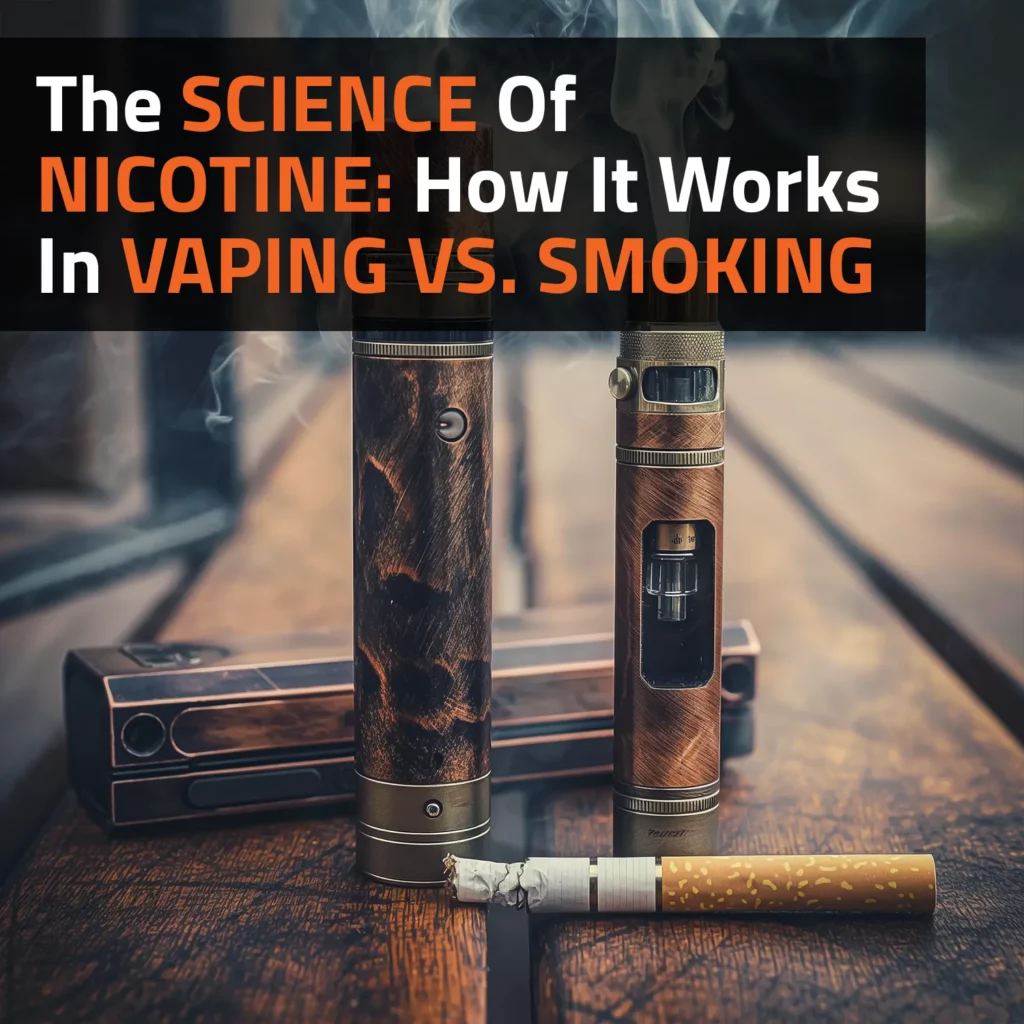Nicotine is one of the most widely used substances in the world. Known for its stimulating and mood-altering effects, nicotine is the primary reason why people develop a dependency on cigarettes. As vaping has peaked in popularity, many smokers have sought alternative methods of nicotine delivery in the practice. But how does nicotine work differently in vaping compared to smoking? In this article, we will explore the science behind nicotine, how it interacts with the body, and differences in how it functions when consumed via vaping versus traditional smoking.
What Is Nicotine?
Nicotine is a stimulant that affects the brain and body by activating the release of various neurotransmitters such as dopamine. When consumed, nicotine reaches the brain in as little as 10 seconds, which creates a brief sense of pleasure or reward. This rapid delivery is one of the key factors behind nicotine’s addictive nature.
In addition to stimulating dopamine production, nicotine also affects other chemicals in the brain. This includes serotonin, which is responsible for mood regulation, and acetylcholine, which plays a role in learning and memory. The combined effects of these chemicals are what lead to the heightened sense of focus, relaxation, and satisfaction often experienced after nicotine consumption.
Nicotine Consumption Via Smoking
Nicotine is delivered to the body in a very particular way during traditional smoking. Cigarettes contain dried tobacco leaves, which release nicotine alongside a variety of other harmful chemicals when burned, such as tar and carbon monoxide. The combustion process is what makes smoking so dangerous as these byproducts are toxic to the body and can lead to long-term health issues. Risks of smoking include lung disease, cancer, and heart disease.
Nicotine Absorption In Smoking
When smoking, nicotine is delivered rapidly to the lungs, absorbed into the bloodstream, and carried to the brain. The speed at which nicotine reaches the brain further enhances its addictive potential. Smokers typically inhale nicotine within seconds of lighting a cigarette, which creates a strong and immediate connection between the action (smoking) and the reward (nicotine’s effects).
Each puff of a cigarette provides a small but powerful hit of nicotine. Over time, smokers develop a tolerance and will require more nicotine to achieve the same effects. This cycle of dependency is further compounded by the harmful additives found in cigarettes that can enhance nicotine’s addictive properties.
Nicotine Consumption Via Vaping
Vaping delivers nicotine in a fundamentally different way than through smoking. Instead of burning tobacco, vaping devices heat a nicotine-containing e-liquid to produce vapour. This vapour is then inhaled into the lungs and absorbed into the bloodstream, similar to smoking. The key difference lies in the absence of combustion, which means that vaping does not produce the harmful byproducts associated with smoking.
Nicotine Absorption In Vaping
The way nicotine is absorbed in vaping differs from smoking due to the delivery method and the chemical composition of the e-liquids. Nicotine salts, which are a more stable form of nicotine, are commonly used in e-liquids as they provide a smoother and more efficient method of nicotine delivery. This gives vapers the option to consume nicotine at lower temperatures without the harsh throat hit that comes with traditional cigarettes.
Vaping Vs. Smoking: Nicotine Delivery
One of the primary differences between vaping and smoking lies in how nicotine is delivered and the body’s response to it.
Speed Of Absorption
- Smoking: Nicotine reaches the brain almost instantly due to rapid absorption in the lungs. The combustion process breaks down the tobacco into small particles, which are more easily absorbed.
- Vaping: Nicotine delivery is a little slower, although e-liquids with nicotine salts can increase the efficiency of absorption.
Nicotine Strength And Control
- Smoking: Traditional cigarettes contain a fixed amount of nicotine per cigarette, typically ranging from 8 to 20 mg. Smokers consume the entire amount in a single session, giving them less control over how much nicotine they take in with each puff.
- Vaping: Allows for more customisation – e-liquids come in various nicotine concentrations, giving users the option to select the strength that suits their needs. Some vapers may choose high-nicotine e-liquids, while others prefer lower concentrations or even nicotine-free options as they reduce their dependency.
Frequency Of Use
- Smoking: Smokers typically consume nicotine in “sessions” by smoking a full cigarette. The rapid onset of nicotine and its equally rapid decline between cigarettes often leads to distinct peaks and troughs in nicotine levels throughout the day.
- Vaping: Vapers tend to consume nicotine more gradually, often taking smaller, more frequent hits. This can result in a more consistent nicotine level in the bloodstream, reducing the strong cravings that many smokers experience between cigarettes.
Health Implications: Smoking Vs. Vaping
While nicotine itself is addictive, the majority of health risks associated with smoking stem from the other chemicals produced during combustion, such as tar, carbon monoxide, and formaldehyde. These byproducts contribute to serious conditions like lung cancer, cardiovascular disease, and chronic obstructive pulmonary disease (COPD).
Vaping eliminates the need for combustion, which also eliminates the harmful chemicals. While e-liquids and vapour may contain some flavourings and other additives, studies suggest that vaping is much less harmful than smoking.
Transitioning From Smoking To Vaping
For many smokers, vaping provides a safer alternative that allows them to continue consuming nicotine without exposure to the dangerous chemicals found in cigarettes. Many people use vaping as a tool to gradually reduce their nicotine intake with the ultimate goal of quitting altogether. By lowering the nicotine concentration in their e-liquids over time, users can wean themselves off nicotine without experiencing the intense withdrawal symptoms associated with quitting cold turkey.
While both smoking and vaping deliver nicotine, the way it is absorbed and experienced in the body differs significantly. Smoking involves rapid nicotine delivery through the combustion of tobacco, which also exposes the body to numerous harmful chemicals. Vaping provides a slower and more controlled nicotine delivery without the dangerous byproducts of combustion. As a result, vaping is a less harmful alternative to smoking with the potential to help smokers reduce their dependence on nicotine over time.
-
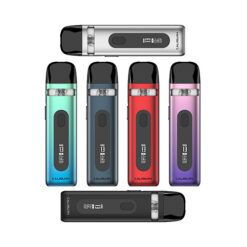 UWELL Caliburn X Pod SystemR625.00Rated 4.00 out of 5 based on 1 customer rating
UWELL Caliburn X Pod SystemR625.00Rated 4.00 out of 5 based on 1 customer rating -
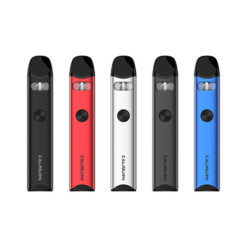 Uwell Caliburn A3 Pod KitR450.00
Uwell Caliburn A3 Pod KitR450.00 -
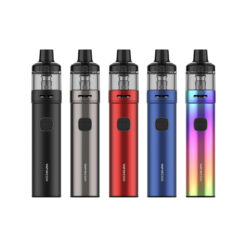 Vaporesso GTX GO 40 KitR395.00
Vaporesso GTX GO 40 KitR395.00 -
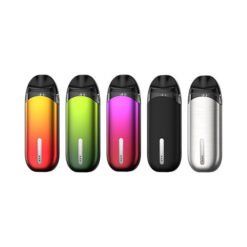 Vaporesso Zero S KitR420.00
Vaporesso Zero S KitR420.00


